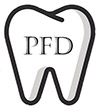
Periodontal disease is an inflammation of the gums and soft tissues surrounding the teeth. Although heredity and other factors may play a role, the most prominent reason why people acquire periodontal disease is poor oral hygiene. The condition exhibits itself in stages and it is often dismissed by patients as “normal” as there is no discomfort present in the beginning phases of the disease.
Initial Symptoms
The first signs of gum inflammation are redness, soreness and minor bleeding when brushing. Without regular oral care at home, the bacteria harbors around the teeth in the form of plaque. Depending on the body’s chemistry, it may be clear, yellow, orange or in rare cases, green. Habitual brushing, flossing and mouthwash rinsing typically removes the debris keeping the oral region healthy and disease free. Lack of routine hygiene results in early stages of periodontal disease called gingivitis, a reversible condition that may be rectified when detected early.
The Diagnosis
During the patient’s first appointment, the dentist meticulously examines all oral structures including the gums. A full set of x-rays is taken to observe the clinical length of the crowns and roots, any fractures and the degree of bone loss. A periodontal probe is used to measure the depth of pockets within interproximal areas of the teeth, and the findings are recorded. Any signs of recession are inspected and taken into consideration when creating a treatment plan. The patient’s medical history is also documented for future reference. The ultimate goal is to educate the patient about the importance of good oral health and prevention of gum disease.
Lack of Treatment
If the disease is allowed to progress, it eventually leads to periodontitis. At this stage, the plaque is transformed into a hard substance called tartar which invades the connective tissue and alveolar bone that keeps dentition in its place. Advanced stages of periodontitis lead to mobility of teeth and premature tooth loss. Chronic periodontitis often results in rapid progression of the disease. More severe measures may be recommended in efforts to save the remaining dentition and halt the process of any further deterioration.
Methods of Treatment
Depending on the severity of the condition, many patients benefit from scaling and root planing (deep cleaning) followed by more frequent visits for prophylactic cleanings, usually scheduled every three months. Severe cases may require dental surgery including pocket reduction, bone grafting or guided tissue regeneration.
